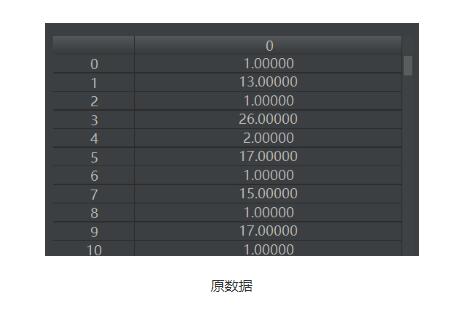Java項(xiàng)目打包發(fā)布到maven私倉(cāng)常見的幾種方式
在早期沒有使用maven之前,我們引用一些公有jar或者api jar,我們可能會(huì)采用這樣的方式,通過手動(dòng)導(dǎo)入這些jar到項(xiàng)目的classpath路徑進(jìn)行引用。
有了maven后,我們公司內(nèi)部可能就會(huì)搭建maven私倉(cāng)比如nexus,然后把這些公有jar或者api jar上傳到nexus私倉(cāng),在pom.xml配置一下這些jar的坐標(biāo)就可以引用。
今天我們的話題就是來聊聊項(xiàng)目打包發(fā)布到maven私倉(cāng)常見的幾種方式
發(fā)布到maven私倉(cāng)的步驟1.在maven的settings.xml中< servers >節(jié)點(diǎn)配置用戶名和密碼,形如下:<servers> <server> <id>nexus-releases</id> <username>admin</username> <password>admin123</password> </server> <server> <id>nexus-snapshots</id> <username>admin</username> <password>admin123</password> </server> </servers>
注: 其中id可先看做是一個(gè)標(biāo)識(shí)。username和password為nexus私倉(cāng)的用戶名和密碼
2、指定發(fā)布到nexus私倉(cāng)的url并進(jìn)行發(fā)布方式一:pom.xml文件添加distributionManagement節(jié)點(diǎn)形如下:
<distributionManagement> <!--正式版本--> <repository> <!-- 在settings.xml中<server>的id--> <id>nexus-releases</id> <url>http://192.168.0.11:8081/nexus/content/repositories/releases/</url> </repository> <!--快照版本--> <snapshotRepository> <id>nexus-snapshots</id> <url>http://192.168.0.11:8081/nexus/content/repositories/snapshots/</url> </snapshotRepository> </distributionManagement>
注:
如果存在parent,只需在parent中的pom.xml中配置,沒有則在本項(xiàng)目的pom.xml配置即可 < repository >節(jié)點(diǎn)下的< id >對(duì)應(yīng)maven的配置文件settings.xml文件中的server的id,兩者必須保持一致 上傳到私倉(cāng)的是正式版本還是快照版本,取決于pom.xml文件version中是SNAPSHOT還是RELEASE。比如你項(xiàng)目中配置如下<groupId>com.example</groupId> <artifactId>demo</artifactId> <version>0.0.1-SNAPSHOT</version>
則上傳到私倉(cāng)的就是快照版本
最后執(zhí)行maven的deploy命令進(jìn)行發(fā)布
方式二:在maven的settings.xml中< profiles >節(jié)點(diǎn)配置< properties >,并在< properties >指定<altSnapshotDeploymentRepository > 和< altReleaseDeploymentRepository >形如下:
<profiles> <profile> <id>nexus</id> <properties> <altSnapshotDeploymentRepository> nexus-snapshots::default::http://192.168.0.11:8081/repository/maven-snapshots/ </altSnapshotDeploymentRepository> <altReleaseDeploymentRepository> nexus-releases::default::http://192.168.0.11:8081/repository/maven-releases/ </altReleaseDeploymentRepository> </properties> </profile> </profiles> <activeProfiles> <activeProfile>nexus</activeProfile> </activeProfiles>
注:
nexus-snapshots和 nexus-releases要和maven的配置文件settings.xml文件中的server的id,兩者必須保持一致 屬性altSnapshotDeploymentRepository和altReleaseDeploymentRepository是隨maven-release-plugin 2.8版一起引入的。低于2.8版本,執(zhí)行mvn deploy時(shí),則會(huì)報(bào)如下錯(cuò)誤Deployment failed: repository element was not specified in the POM inside distributionManagement element or in -DaltDeploymentRepository=id::layout::url parameter
解決方案就是在發(fā)布的項(xiàng)目中指定一下2.8版本以上的插件,形如下
<build> <plugins> <plugin> <artifactId>maven-deploy-plugin</artifactId> <version>2.8.2</version> </plugin> </plugins> </build>
最后再執(zhí)行maven的deploy命令進(jìn)行發(fā)布
方式三:通過mvn deploy指定參數(shù)方法一:通過-D參數(shù)指定altSnapshotDeploymentRepository和altReleaseDeploymentRepository形如下
mvn deploy -DskipTests -DaltSnapshotDeploymentRepository=nexus-snapshots::default::https://YOUR_NEXUS_URL/snapshots-DaltReleaseDeploymentRepository=nexus-releases::default::https://YOUR_NEXUS_URL/releases
同理上述命令要執(zhí)行成功,得確保deploy插件是基于2.8版本以上
方法二:通過-D指定要發(fā)布的jar的相關(guān)信息以及私倉(cāng)地址,私倉(cāng)id,私倉(cāng)id要和settings.xml文件中的server的id保持一致形如下
mvn deploy:deploy-file -DskipTests -Dfile=jar包文件地址,絕對(duì)路徑 -DgroupId=組名 -DartifactId=項(xiàng)目名稱 -Dversion=版本號(hào) -Dpackaging=jar -DrepositoryId=私庫(kù)id(和setting.xml文件中的server的id保持一致) -Durl=私倉(cāng)地址方式四:通過nexus的可視化界面進(jìn)行上傳jar發(fā)布

方式一,通過distributionManagement這種方式發(fā)布,可能是大多數(shù)人的選擇。但如果要發(fā)布的項(xiàng)目很多,我們就可以考慮使用方式二,通過在全局的settings文件配置altSnapshotDeploymentRepository 和altReleaseDeploymentRepository進(jìn)行發(fā)布,只需配置一次,所有項(xiàng)目就都可以發(fā)布,無(wú)需在多個(gè)項(xiàng)目pom指定
方式一和方式二比較適合公司自己內(nèi)部開發(fā)項(xiàng)目,對(duì)于一些第三方提供的jar,推薦使用mvn deploy -DrepositoryId=私庫(kù)id(和settings.xml文件中的server的id保持一致) -Durl=私倉(cāng)地址的方式或者直接使用nexus可視化界面上傳的方式
以上就是項(xiàng)目打包發(fā)布到maven私倉(cāng)常見的幾種方式的詳細(xì)內(nèi)容,更多關(guān)于項(xiàng)目打包發(fā)布到maven的資料請(qǐng)關(guān)注好吧啦網(wǎng)其它相關(guān)文章!
相關(guān)文章:
1. python實(shí)現(xiàn)讀取類別頻數(shù)數(shù)據(jù)畫水平條形圖案例2. php5.6不能擴(kuò)展redis.so的解決方法3. Java 基于UDP協(xié)議實(shí)現(xiàn)消息發(fā)送4. python 爬取嗶哩嗶哩up主信息和投稿視頻5. PHP獲取時(shí)間戳等相關(guān)函數(shù)匯總6. Python編寫nmap掃描工具7. 關(guān)于HTML5的img標(biāo)簽8. python 如何停止一個(gè)死循環(huán)的線程9. ASP.NET MVC前臺(tái)動(dòng)態(tài)添加文本框并在后臺(tái)使用FormCollection接收值10. CSS3實(shí)現(xiàn)動(dòng)態(tài)翻牌效果 仿百度貼吧3D翻牌一次動(dòng)畫特效

 網(wǎng)公網(wǎng)安備
網(wǎng)公網(wǎng)安備